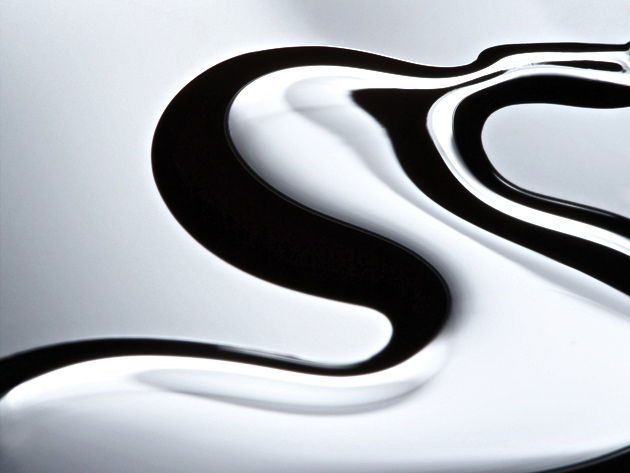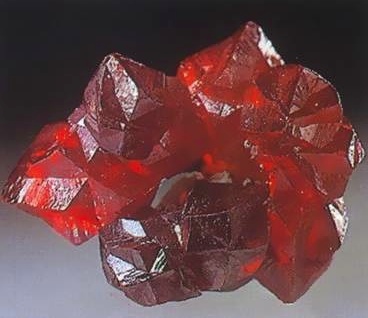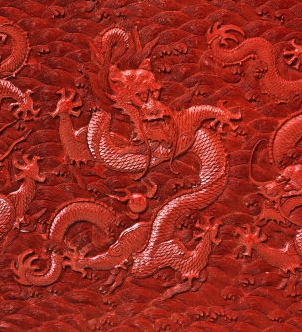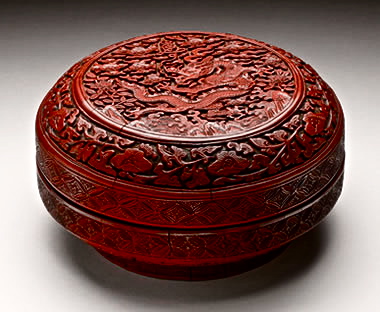| |
|
Chinese Taoist Alchemist |
Cinnabar Mineral |
|
Alchemy in China is always
associated with the 'Quest for Immortality'
In ancient China it flourished with the development of
Taoism
The image of the ultra Supreme Elder Lord - the Highest Patriarch of
Taoism
(always goes side by side with an alchemy furnace) |
|
Alchemy gained unreserved support
from the Ancient Emperors of China who desired to become Immortal
These Emperors asked thousands of Taoist Priests to achieve an
"Elixir of Immortality" |
 |
Huang Ti
First Emperor of a United China
His Search for Immortality
The Chinese Emperor had done much to become immortal,
but apparently in vain. His physicians had prepared herbal and
Alchemical Elixirs, but none could stave off his decline. He had
sent a minister on a voyage far over the eastern seas in search of a
mythical 'Potion of Eternal Life', but that expedition never
returned, and now the quest seemed hopeless. Therefore, Emperor Qin
Shi Huang Ti, in the third century BC, began his preparations for
the next best thing to an endless life on Earth. He would continue his
cosmic rule from the spirit world, and his underground tomb would be a
palace for the afterlife, complete with its own army of life-size clay
soldiers.
Those terracotta warriors lay hidden for two thousand
years beneath several metres of sandy soil a mile from the First
Emperorís burial mound at Mount Li, to the northeast of the city of
Xiían in Shaanxi Province of Northcentral China. |
|
Huang Ti |
There are at least 8000 of them, once brightly painted and equipped
with |
| clay horses and wooden chariots. Further excavation revealed the
extent of the Emperorís Mausoleum, with offices, stables and
halls, along with clay figures of officials, acrobats and laborers and
life-size bronze animals. The Han Dynasty historian Sima Qian, writing
in second century BC, claimed that 700,000 men had worked on the
emperorís tomb, constructing entire palaces, towers and scenic
landscapes through which which the Emperorís Spirit might roam. |
|
Flowing Rivers of Mercury
No one knows what other wonders the mausoleum might
house, for the main burial chamber, a football field sized hall, beneath
a great mound of earth, remains sealed. Most enticing of all is a detail
relayed by historian Qian: "Mercury was used to fashion the hundred
rivers, the Yellow river and the Yangtze river, and the seas in such a
way that they flowed". This idea that the main chamber contains a
kind of microcosm of all of China (as it was then recognized) with
rivers, lakes and seas of shimmering mercury had long seemed too
fantastic for modern historians to grant it credence. But if Qian had
not been inventing stories about other elaborate features of the
mausoleum site, might his account of the tomb chamber be reliable too?
The experiments in Alchemy, greatly promoted advances in
science and technology in ancient China, including gun powder. |
 |
|
The Emperor Consumed Cinnabar to Prolong his Life |
Flowing Mercury |
| Chinese legend tells of one Huang An, who prolonged his life for at
least 10,000 years by eating mercury sulfide (the mineral Cinnabar). The
First Emperor was said to have consumed wine and honey laden with
Cinnabar thinking it would prolong his life. |
 |
Mercury in Chinese - Shui Yin (Water Silver)
During the Warring States period, Mercury was a common
ingredient of medicines being used to treat infected sores, scabies,
ringworm and as a sedative for mania and insomnia.
Mercury had many other uses, particularly in Alchemy,
which has some of its oldest roots in China. In the west this art was
commonly associated with attempts to make gold from other metals, and
some Chinese Alchemists tried that too, for in 144 BC the Han Emperor
Jingdi decreed that anyone caught trying to make counterfeit gold should
be executed. But Chinese Alchemy was more oriented towards medicinal
uses, in particular Elixirs of Immortality.
Throughout antiquity Cinnabar was the source of all
mercury metal.
Mercury, either as Cinnabar or as the elemental metal,
has been found in tombs dating back as far as the second millennium BC.
Cinnabar (HgS) was widely used in ancient China for decoration, medicine
and Alchemy. |
|
Cinnabar (HgS) Mercury Sulfide w/86%
Mercury |
There is a lot of this mineral in China, particularly in the west. |
| Shaanxi alone contains almost a fifth of all the cinnabar reserves
in the country, and there are very ancient mines in Xunyang county in
the south of the province that are a good candidate source of the
mercury apparently in the First Emperorís tomb. To extract Mercury
from Cinnabar one need only roast it in air, converting the sulfur to
sulfur dioxide while the mercury is released as vapor that can then be
condensed. Since Mercury boils at 357įC, this process needs temperatures
well within the capabilities of Qin era kilns. Of course, anyone trying
this method in an unsealed container Ė closed chambers werenít used
until the Han period Ė risked serious harm.
One of the most important uses of Mercury at this time has a
particularly Alchemical tinge. Gold and Silver dissolve in Mercury to
form amalgams, and such mixtures were used for gilt plating. The amalgam
was rubbed on and heated to evaporate the mercury leaving behind a
gleaming coat of precious metal. Such mixtures also featured in
Alchemical Elixirs: the Taoist concept of Yin and Yang, the two
fundamental and complementary principles of life, encouraged an idea
that cold, watery (Yang) Mercury and bright, fiery (Yin) Gold
might be blended in ideal proportions to sustain vitality. |
|
 |
 |
|
Rare - Cinnabar Lacquered
Imperial 'Nine Dragon' Tea Ceremony Chest |
Box w/Lacquer Containing Cinnabar Pigment |
| Because it is bright red, Cinnabar was also used for art and
decoration in China since around the Second Millennium BC. Produced in
the west since the Roman era, it became known as the pigment vermilion. |
|
